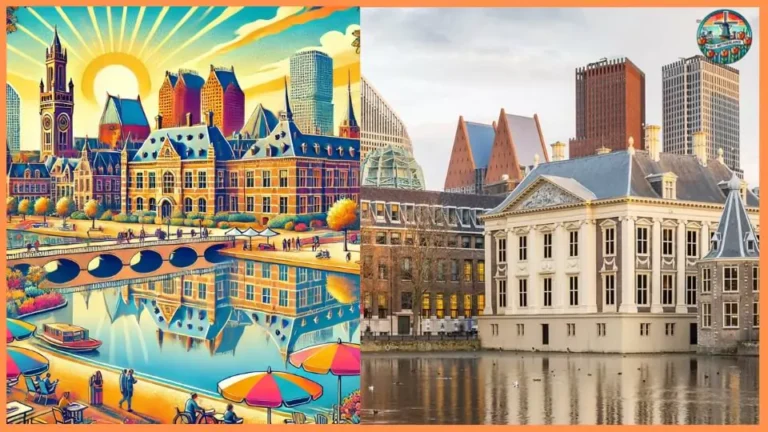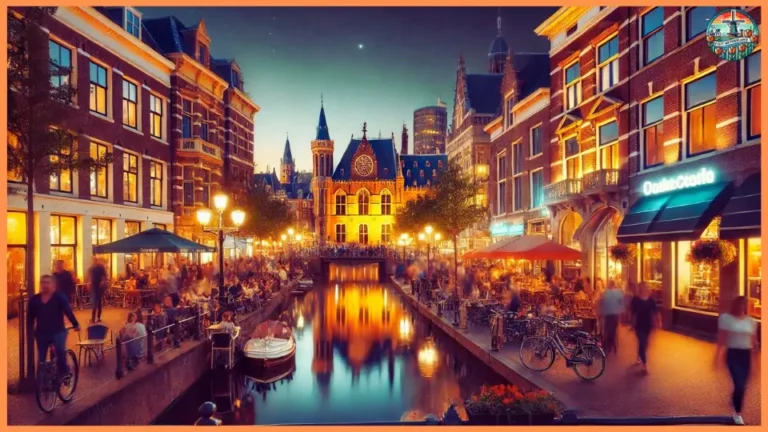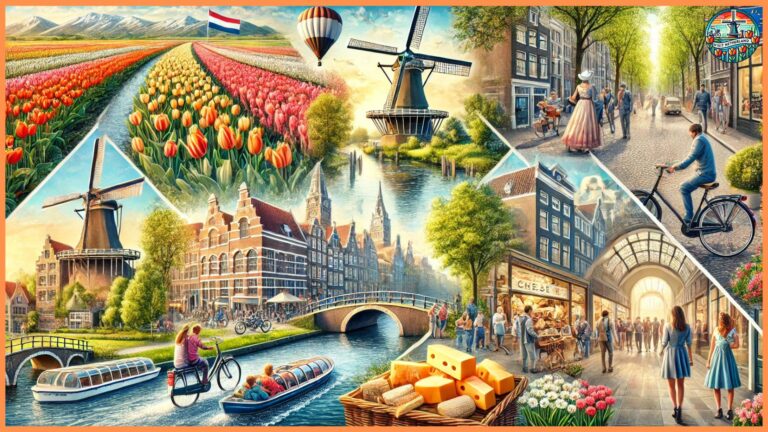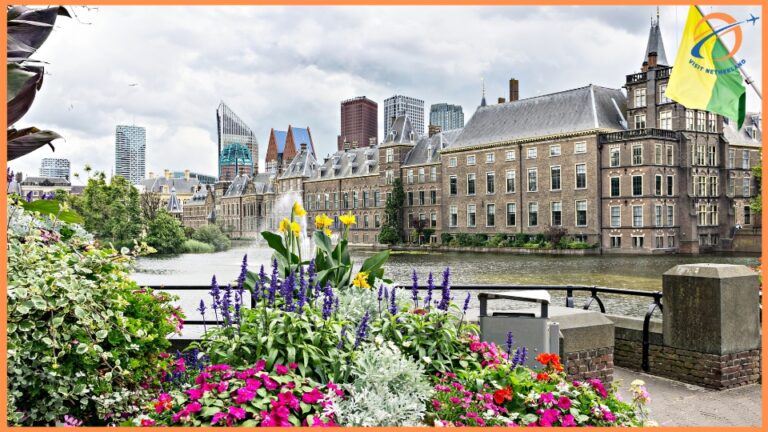7 Things You Might Not Know About Amsterdam
Amsterdam is the ebullient capital city of the Netherlands, known for its rich history, charming canals, and its liberal culture. However, there are many intriguing facts about this iconic city that casual visitors do not know. In this article, we look deep into seven interesting aspects of Amsterdam that even seasoned travelers may find astonishing.
1. Amsterdam Has More Canals Than Venice
Although usually thought of as the city of canals, Amsterdam has over 165 canals, beating Venice. Some feel it adds to the city’s character and charisma transportation network is unique and a pictorial setting for daily life. Most of the canals were built in the 17th century and were not just for aesthetic appeal but served a practical solution for water management. Nowadays, the Canal Ring is a UNESCO World Heritage site that attracts millions of visitors each year.
Many of them are inhabited by houseboats, and there are over 2,500 houseboats moored along the canals, offering an alternative way of living in the heart of Amsterdam. Whether you prefer taking a canal cruise or having a quiet walk along the water-the Amsterdam canal system is a unique sight to see.
2. The City’s Foundations are Built on Wooden Poles
Underneath the charming streets of Amsterdam, there is a foundation of over 11 million wooden poles. So, for the buildings to stand correctly on marshy ground, the city’s buildings needed to be set on strong grounds. Wooden poles were employed to firm up buildings on marshy lands. The poles often used for this purpose are sturdy Scandinavian pines driven deep into the ground until the sand is reached that is able to support the buildings.
Nowadays, the Royal Palace in Dam Square literally stands on almost 13,659 wooden poles. It is something of a surprise to think that a whole city of Amsterdam’s size and modernity is dependent upon such ancient engineering methods. As it is, though, many older buildings do subside over time, giving some of Amsterdam’s buildings their famously tilted appearance.
3. Amsterdam is Home to More Bicycles Than People
Amsterdam is truly a treasure trove of culture: nowhere else in the world does any other city offer so many museums to its inhabitants. More than 75 dot the city landscape, which means there’s something for everyone in every field, be it art, history, or more culturally typical. The most well-known, of course, are the Rijksmuseum, the Van Gogh Museum, and the Anne Frank House, but that leaves plenty of other, smaller museums that will tell you something special about Amsterdam’s past and present.
These vary between something like the Tropenmuseum, featuring a vast exposition on world cultures, to the more quirky Electric Ladyland Museum, the world’s first and only museum of fluorescent art. Whether it concerns art, history, or maybe houseboats and cheese that wow you, Amsterdam’s museums are not to be missed by anyone who claims to love culture.
4. Amsterdam Has One of the World’s Oldest Stock Exchanges
Partially for this reason, Amsterdam often gets credit as the birthplace of the modern financial system, largely because of the opening of the Amsterdam Stock Exchange in 1602. Established by VOC, it is viewed as the first stock exchange of its kind in the world, where one could purchase and sell shares in a company.
That early stock market system spread to influence a wide variety of parts of the world and has left an indelible mark on how financial systems around the world function today. These days, the Amsterdam Stock Exchange remains a significant hub in European finance but has turned its attention towards modern equities and bonds among other financial instruments.
5. Tulips Didn’t Originate in the Netherlands
Though associated with the Netherlands, tulips are actually non-indigenous to the country. They were first imported in bulk from Turkey late in the 16th century and soon contracted to be a signature of wealth and status. The bulbs of tulips during the Tulip Mania in the 17th century were sold at exorbitant prices, to such an extent that one bulb at one time cost as much as a house!
This tulip hysteria eventually passed, but the flower has remained an iconic feature of Dutch culture. Every spring, millions of tulips turn the Keukenhof Gardens near Amsterdam into a kaleidoscope of colors; tourists flock to these gardens. During the annual Tulip Festival in the city, flower enthusiasts alike flock to see the startling flower displays across and through parks and public areas.
6. Amsterdam Has More Museums Per Capita Than Any Other City
Amsterdam is a cultural treasure trove, boasting more museums per capita than any other city in the world. With over 75 museums, the city offers a diverse range of cultural, historical, and artistic experiences. The Rijksmuseum, Van Gogh Museum, and the Anne Frank House are some of the most famous, but there are also many lesser-known museums that offer unique insights into Amsterdam’s past and present.
For example, the Tropenmuseum focuses on global cultures, while the Electric Ladyland Museum is the world’s first museum dedicated to fluorescent art. Whether you’re interested in art, history, or niche subjects like houseboats or cheese, Amsterdam’s museum scene is a must-see for culture enthusiasts.
7. The Narrowest House in the World Is in Amsterdam
Amsterdam is known for its narrow houses, a result of high taxes based on the width of a property’s frontage during the Dutch Golden Age. The narrowest house in Amsterdam is located at Singel 7, measuring just 1 meter (3.3 feet) wide at the front. While it expands slightly in the back, the front of the house gives the illusion that it is impossibly small.
This quirky architectural feature is just one of many charming oddities in Amsterdam’s urban landscape. As you explore the city, you’ll encounter countless narrow houses, some leaning to the side due to subsidence or their wooden foundations. It’s all part of the city’s unique charm and history.
Pride and Liberation
Amsterdam’s Pride Parade is one of the largest and most vibrant in the world. The event celebrates freedom and diversity, drawing thousands of people to the city every year for a spectacular display of unity.
Amsterdam is a city that surprises and delights at every turn. From its hidden historical treasures to its modern cultural landmarks, there is always something new to discover. Whether you’re cycling along the canals or exploring its world-class museums, Amsterdam’s rich history and vibrant present offer an unforgettable experience.
FAQs About Amsterdam
What are the best-hidden gems in Amsterdam?
Explore hidden courtyards, lesser-known canals, and local markets.
How safe is it to ride a bike in Amsterdam?
Very safe! With dedicated bike lanes and strict rules, cycling is the primary mode of transportation for locals.






